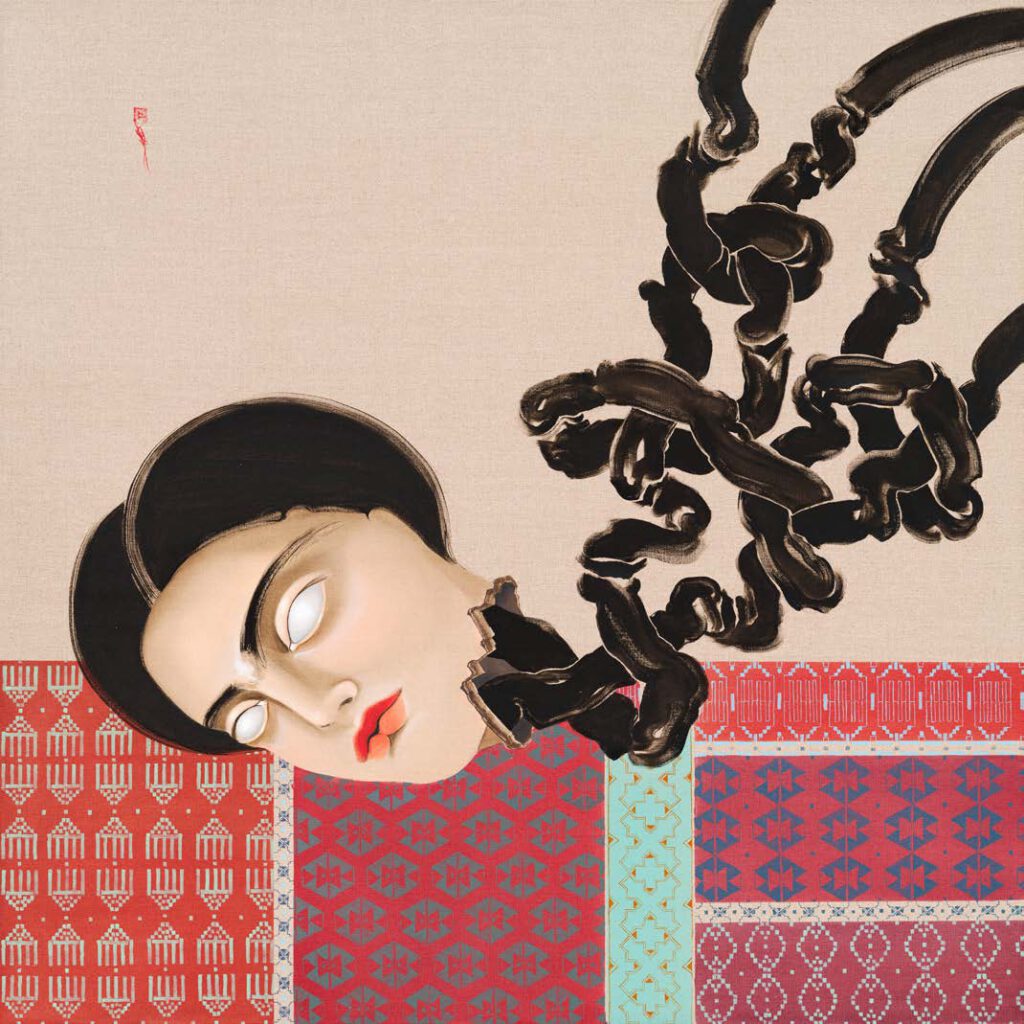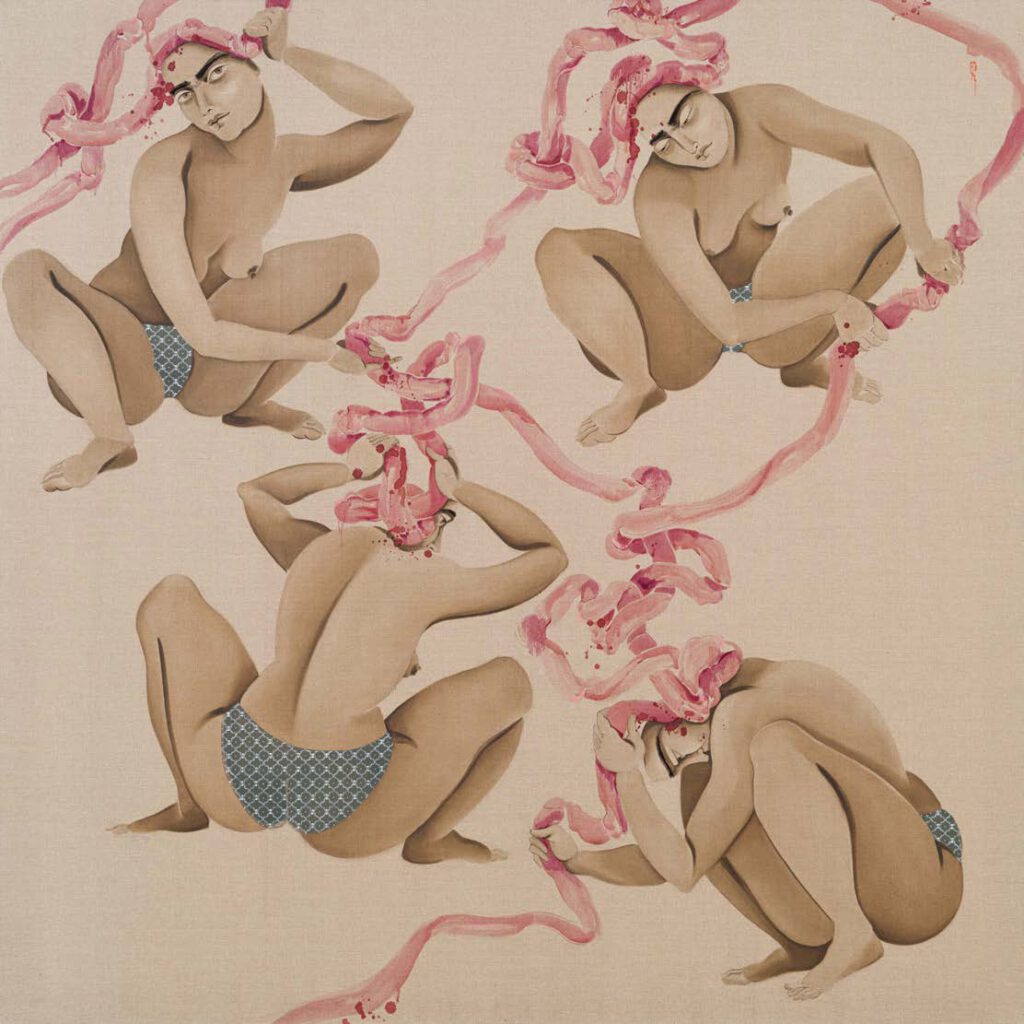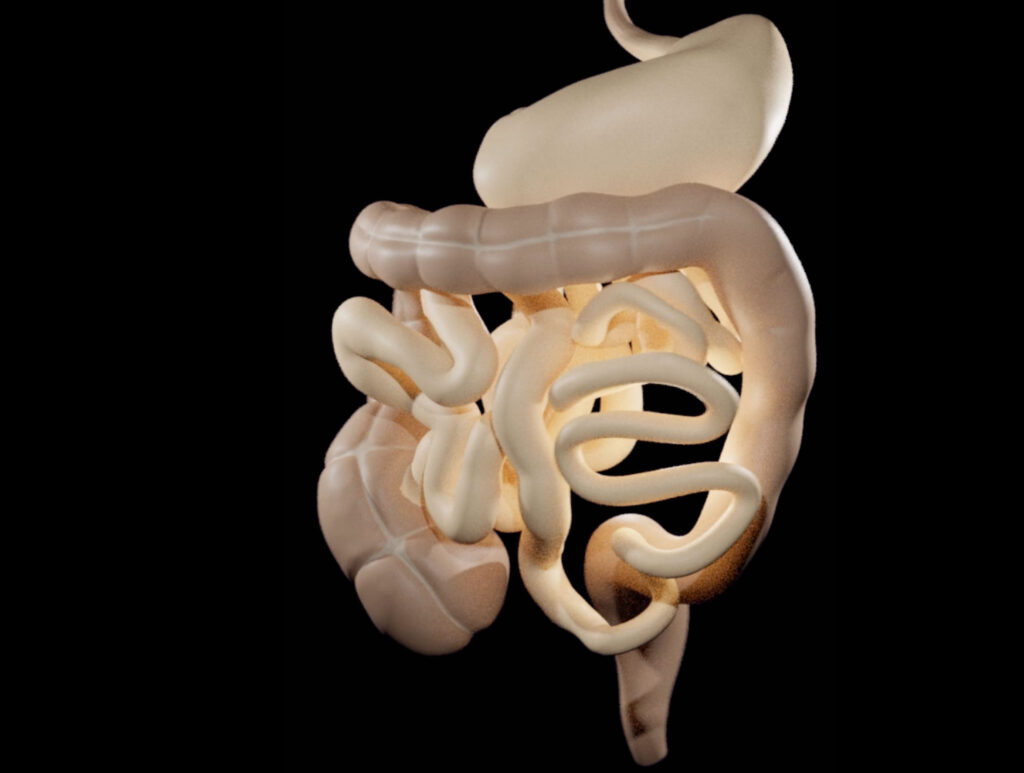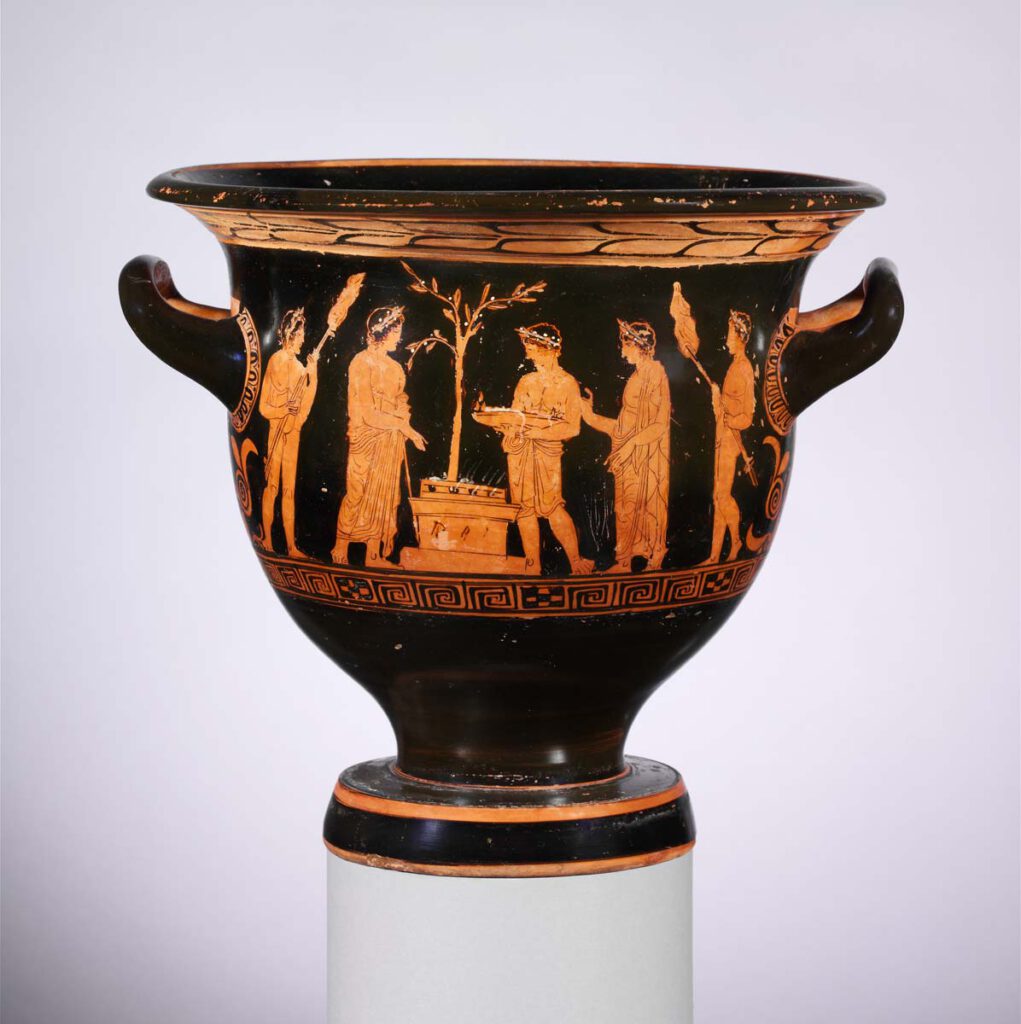XICONHOCA, THE ENEMY
XICONHOCA, ‘THE ENEMY’ Cartoon published by the Mozambican Liberation Front’s Office of Mass Communications in 1976 – Xiconhoca: this figure was created by the post-revolutionary socialist state as a key means of mobilising moral and political critique of corruption in the service of the new postcolonial nation. It had a second life in the era […]
NeuroBust no.5

NeuroBust no.5 Hayv Kahraman NeuroBust no.5, 2022 Oil on linen 88.9 × 88.9 cm 35 × 35 in (KAHR 2022004) Read the History
Entanglements with torshi no.2

Entanglements with torshi no. 2 Hayv Kahraman Entanglements with torshi no.2, 2022 Oil and torshi on linen 177.8 × 177.8 cm 70 × 70 in (KAHR 2022003) Read the History
The 3D Model of the Digestive System according to Aristotle

https://comparative-guts.net/wp-content/uploads/2023/02/Atlomy-Exhibit-4_2.mp4 The 3D Model of the Digestive System according to Aristotle Copyright: ATLOMY (ERC StG GA 852550) Hebrew University of Jerusalem – This 3-D model of the stomach and the intestines presents ATLOMY’s interpretation of the ancient text. While it might not be evident at first sight, this model differs from contemporary models of the […]
From Text to Model: The Guts according to Aristotle

From Text to Model: The Guts according to Aristotle Copyright: ATLOMY (ERC StG GA 852550) Hebrew University of Jerusalem – A depiction of the first stages towards creating a 3D model of the human guts as described in Aristotle’s treatise Inquiries on Animals. The interdisciplinary team facilitates a unique analysis which bridges the gap between […]
Red-figured terracotta bell-krater

Red-figured terracotta bell-krater – Vessel for mixing wine and water, attributed to the Nikias Painter, late 5th century BCE, with three youths preparing meat offering, altar stacked with burning wood and smoking with knisa. Attendants on either side carry skewers likely holding viscera. The viscera would release putrescine and cadaverine, whose scent is characterised as […]
Black-figured terracotta column-krater

Black-figured terracotta column-krater – Vessel for mixing wine and water, late 5th century BCE, with men sacrificing a goat to a terminal figure of the god Hermes. The sacrificial victim has been dismembered and a part is being held in the flame on the altar. The entrails resting on the small table would release odorants […]
1597 reprint of Wanbing huichun “Diagram of Man’s Side-Body”

‘Diagram of Man’s Side-Body’ in 1597 reprint of Wanbing huichun (Ceshen ren tu 側身人圖). This version of the “Viscera Man” was printed in a 1597 reprint of the Chinese medical text Myriad diseases ‘Spring Returned’ (i.e., ‘cured’) (Wanbing huichun 萬病回春) that is preserved in the Staatsbibliothek in Berlin. – This 1597 reprint of a “viscera […]
Inshoku yōjō kagami

Inshoku yōjō kagami (飲食養生鑑, “Mirror of Dietary Regimen”; ca. 1850) – This popular print proffering advice on food and health highlights another major theme of early modern economic society—an intensified emphasis on hard work, which the economic historian Akira Hayami termed the “industrious revolution.” (5) But it also illustrates two more subtle developments. One is […]
Sugita Gempaku’s Kaitai shinsho

Sugita Gempaku’s Kaitai shinsho (解体新書, “New Book of Anatomy”; 1774) – Sugita Gempaku undertook his epoch-making translation of a Dutch anatomical manual before he could read Dutch. This point is key: What persuaded him of the manual’s truth was not its text, which he initially couldn’t comprehend, but rather, its images, and more specifically their […]
